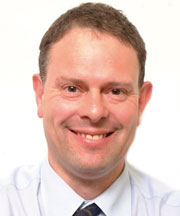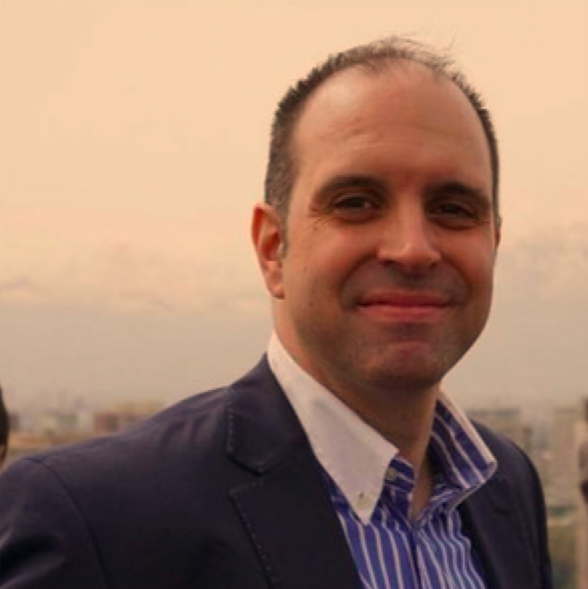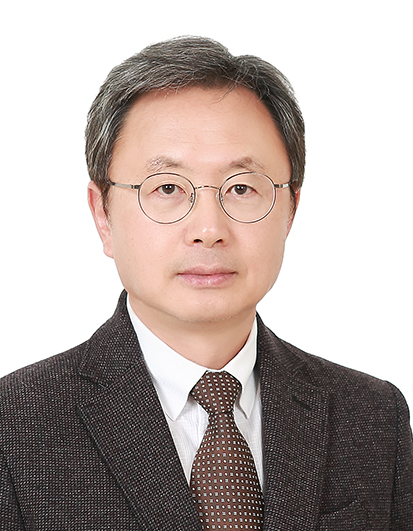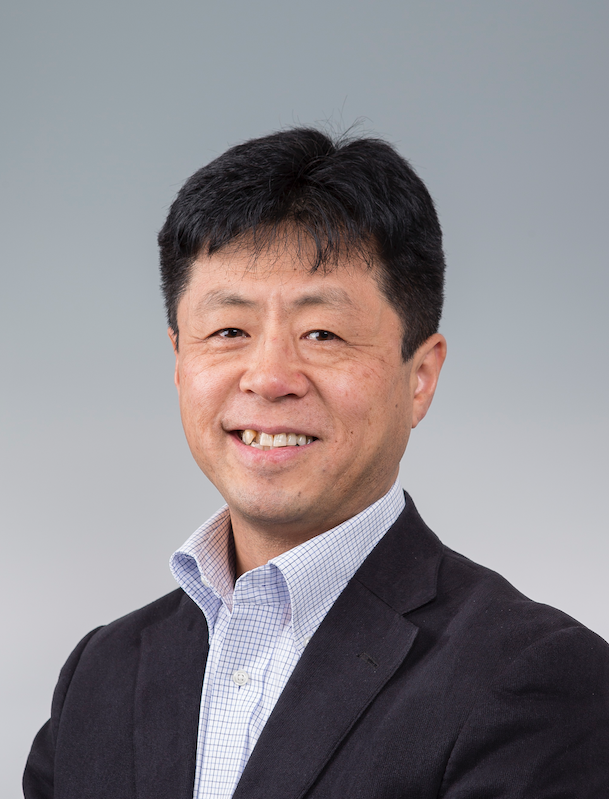MITC2020ne : THE 3rd MALAYSIAN INTERNATIONAL TRIBOLOGY CONFERENCE
KEYNOTE SPEAKERS
KEYNOTE SPEAKERS

Professor W Mark Rainforth
BMet, PhD, FIMMM, CEng, FInstP, CPhys, FRMS, FREng
Professor of Materials Science and Engineering
The University of Sheffield,
United Kingdom.
After obtaining a 1st Class Honours degree from the University of Sheffield, Mark Rainforth initially followed an industrial career. He later joined the Department from the University of Leeds in 1989 and rapidly established state-of-the-art facilities in electron microscopy and tribology. He is co-author of the book Ceramic Microstructures' with W E Lee, a winner of the Rosenhain Medal of the IoM3 and has recently finished his term as President of the Royal Microscopical Society.
His research centres on the high resolution characterisation of microstructures, in particular interfaces and surfaces. His research programmes are broadly based and cover metals, ceramics and coatings:
[ Prof Rainforth Research Link ]
BMet, PhD, FIMMM, CEng, FInstP, CPhys, FRMS, FREng
Professor of Materials Science and Engineering
The University of Sheffield,
United Kingdom.
After obtaining a 1st Class Honours degree from the University of Sheffield, Mark Rainforth initially followed an industrial career. He later joined the Department from the University of Leeds in 1989 and rapidly established state-of-the-art facilities in electron microscopy and tribology. He is co-author of the book Ceramic Microstructures' with W E Lee, a winner of the Rosenhain Medal of the IoM3 and has recently finished his term as President of the Royal Microscopical Society.
His research centres on the high resolution characterisation of microstructures, in particular interfaces and surfaces. His research programmes are broadly based and cover metals, ceramics and coatings:
- Aberration corrected electron microscopy to determine atomic structure and local bonding state, particularly at interfaces in, for example, nanoscale multilayer coatings or functional ceramics.
- Understanding the dynamic microstructural changes that occur as a result of frictional contact, to thereby develop superior materials, for example, next generation hip arthroplasties.
- Surface degeneration phenomena, such as oxidation of metals (including during hot rolling) and hydrothermal degradation of zirconia ceramics.
- Microstructural evolution during the processing of metals, particularly Ti, Mg and steels, aimed at developing new higher strength materials.
- Designing alloys for resource efficiency.
[ Prof Rainforth Research Link ]

Univ.-Prof. Dr.-Ing. Carsten Gachot
Head of the Tribology Research Group,
Institute for Engineering Design and Logistics Engineering,
Vienna University of Technology (TUW),
Vienna, Austria.
Carsten Gachot, born in Neunkirchen/Saar Germany, 15th of March 1978., received his PhD from the Saarland University in Germany in 2012 where he studied the effects of laser interference patterning on the microstructure and topography of metallic surfaces with a focus on tribological applications under Prof. Dr. Frank Mücklich and Prof. Dr. Martin H. Müser. For this work, Dr. Gachot was awarded by the European Honda initiation grant in 2011. Prof. Gachot was academic visitor at the tribology Group at the Imperial College London and is currently the head of the tribology research Group at the Vienna University of Technology. Additionally, Prof. Gachot is a visiting Professor at the Pontifical Catholic University in Santiago de Chile and chief editor of the peer reviewed journal "Industrial Lubrication and Tribology of the Emerald Publishing Group Leeds UK. His research are tribofilm formation in machine elements, materials tribology, surface engineering, wear processes and contact mechanics at different length scales.
[ Prof Gachot Research Link ]
Head of the Tribology Research Group,
Institute for Engineering Design and Logistics Engineering,
Vienna University of Technology (TUW),
Vienna, Austria.
Carsten Gachot, born in Neunkirchen/Saar Germany, 15th of March 1978., received his PhD from the Saarland University in Germany in 2012 where he studied the effects of laser interference patterning on the microstructure and topography of metallic surfaces with a focus on tribological applications under Prof. Dr. Frank Mücklich and Prof. Dr. Martin H. Müser. For this work, Dr. Gachot was awarded by the European Honda initiation grant in 2011. Prof. Gachot was academic visitor at the tribology Group at the Imperial College London and is currently the head of the tribology research Group at the Vienna University of Technology. Additionally, Prof. Gachot is a visiting Professor at the Pontifical Catholic University in Santiago de Chile and chief editor of the peer reviewed journal "Industrial Lubrication and Tribology of the Emerald Publishing Group Leeds UK. His research are tribofilm formation in machine elements, materials tribology, surface engineering, wear processes and contact mechanics at different length scales.
[ Prof Gachot Research Link ]

Prof. Dr. Hyung-Kyu Kim
Korea Atomic Energy Research Institute,
South Korea.
Hyung-Kyu Kim is a principal researcher of Korea Atomic Energy Research Institute in the field of the mechanical design and failure analysis of nuclear fuels for 33 years. He is also a professor of University of Science and Technology in the Major of Nuclear and Radiation Safety, and an adjunct professor of the School of Mechanical Engineering in Chungnam National University where he offers lectures of Tribology and Analytical Mechanics from 2002. After he got the PhD degree in 1997 from Korea Advanced Institute of Science and Technology in the Department of Mechanical Engineering, he visited the Department of Engineering Science, University of Oxford, United Kingdom twice in 1997 and 2012 as a visiting scholar where a two-dimensional contact shear and a complete contact problems were studied with the Solid Mechanics Group in the Department. His research fields are contact mechanics, tribology, fracture mechanics, fatigue fracture and failure analysis. He is currently the President of Korean Tribology Society in 2020.
Korea Atomic Energy Research Institute,
South Korea.
Hyung-Kyu Kim is a principal researcher of Korea Atomic Energy Research Institute in the field of the mechanical design and failure analysis of nuclear fuels for 33 years. He is also a professor of University of Science and Technology in the Major of Nuclear and Radiation Safety, and an adjunct professor of the School of Mechanical Engineering in Chungnam National University where he offers lectures of Tribology and Analytical Mechanics from 2002. After he got the PhD degree in 1997 from Korea Advanced Institute of Science and Technology in the Department of Mechanical Engineering, he visited the Department of Engineering Science, University of Oxford, United Kingdom twice in 1997 and 2012 as a visiting scholar where a two-dimensional contact shear and a complete contact problems were studied with the Solid Mechanics Group in the Department. His research fields are contact mechanics, tribology, fracture mechanics, fatigue fracture and failure analysis. He is currently the President of Korean Tribology Society in 2020.

Prof. Dr. Koshi Adachi
Laboratory of Tribology and Nanointerface Engineering,
Department of Mechanical Systems Engineering,
Tohoku University,
Japan.
Super-low friction is recognized as one of key issues for high efficient usage of energy in mechanical systems. In addition, stability and durability of such super-low is a practically essential issue for real applications. To achieve the super-low and its stability and durability, new materials, coatings, lubricants and new surface design have been strongly required in the world wide.
In dry contact, boundary lubrication regime, mixed-lubrication regime except perfect hydrodynamic lubrication regime, friction surfaces at a stable stage always change significantly from the initial surface. That is to say, design concept for initial surface to control formation of friction interface at a stable stage is strongly required for further technology of super-low.
On the other hand, it is well-known that beginning of sliding so-called running-in period is an important for stable friction by formation of well-conformed interface.
In this presentation super-low obtained by using textured surface and new coatings under are mainly focused, and low friction technology is discussed from the view point of running-in.
Laboratory of Tribology and Nanointerface Engineering,
Department of Mechanical Systems Engineering,
Tohoku University,
Japan.
Super-low friction is recognized as one of key issues for high efficient usage of energy in mechanical systems. In addition, stability and durability of such super-low is a practically essential issue for real applications. To achieve the super-low and its stability and durability, new materials, coatings, lubricants and new surface design have been strongly required in the world wide.
In dry contact, boundary lubrication regime, mixed-lubrication regime except perfect hydrodynamic lubrication regime, friction surfaces at a stable stage always change significantly from the initial surface. That is to say, design concept for initial surface to control formation of friction interface at a stable stage is strongly required for further technology of super-low.
On the other hand, it is well-known that beginning of sliding so-called running-in period is an important for stable friction by formation of well-conformed interface.
In this presentation super-low obtained by using textured surface and new coatings under are mainly focused, and low friction technology is discussed from the view point of running-in.